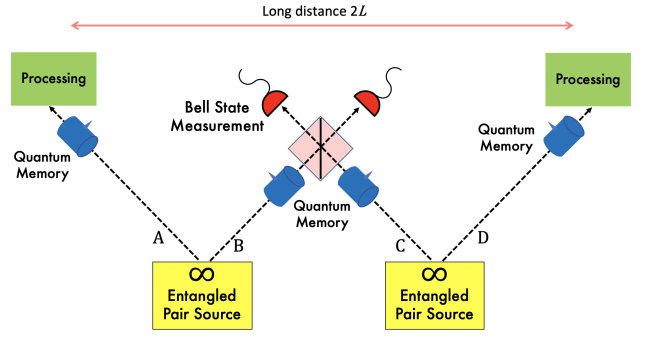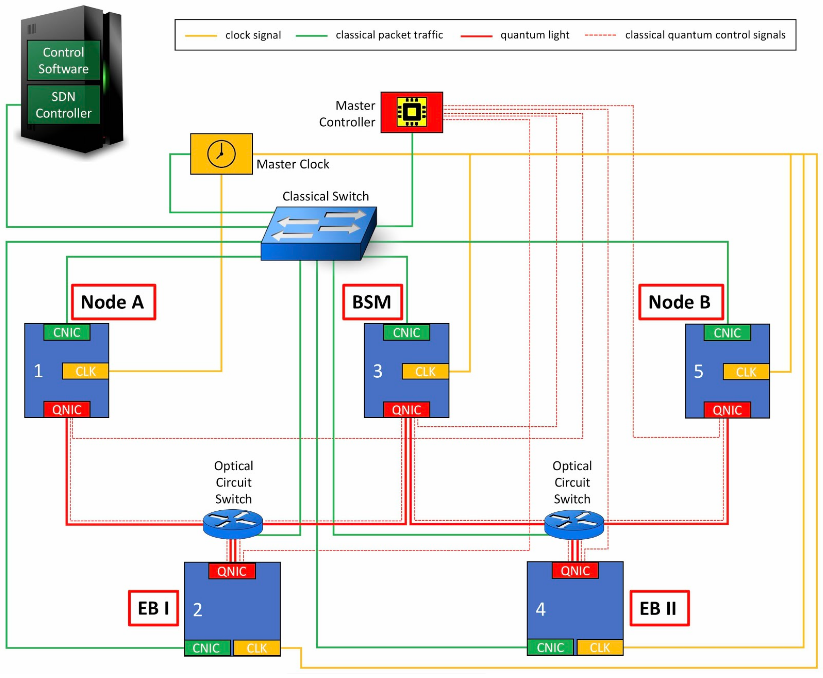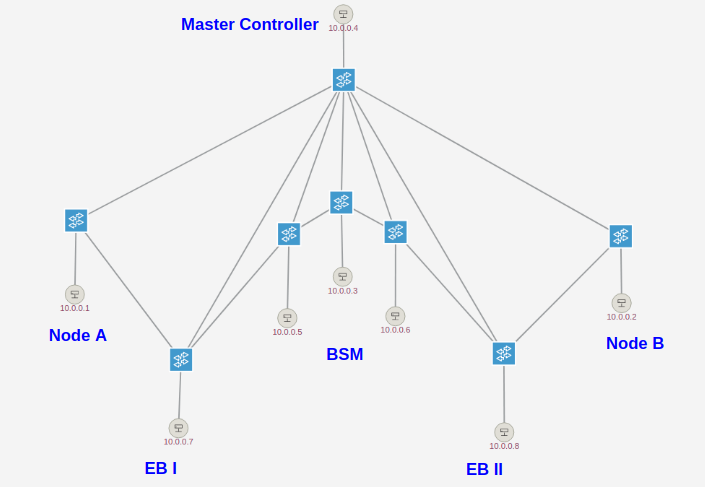Theoretical Base of Quantum Repeater
Entanglement Swapping
The quantum repeater is able to transfer the property of entanglement within two generated pairs, to two members of those pairs which were not previously entangled, an operation known as entanglement swapping.

Quantum Memory
Two entangled pairs are generated and their members propagated to both the final destinations and to an intermediate station, where a Bell-State Measurement (BSM) is performed after which the two remote members are then entangled. However, if the two sources are probabilistic then it is necessary to capture and store the pair members in quantum memories, which preserve their entangled state, until all four are ready to be read out.
Two important properties of quantum memories that would function in quantum repeaters are (i) they need to be readable, i.e., to have the photon emerge, on demand; and (ii) they need to be capable of heralding, meaning that one can perform a non-destructive measurement on each memory to confirm that a photon is stored there without measuring/projecting the photon’s value in the computational basis. With these two capabilities in hand, the repeater can adapt to entangled pairs being generated probabilistically by storing them until they can be heralded as all in place, and then synchronized.
Quantum Repeater Prototype
 Three key components are added to the previous prototye: 1) master controller which has a global view of the entanglement distribution process, 2) clock which helps provide high-resolution time synchronized network, 3) and software-defined network (SDN) controller which allows us to control the traffic of quantum network.
Three key components are added to the previous prototye: 1) master controller which has a global view of the entanglement distribution process, 2) clock which helps provide high-resolution time synchronized network, 3) and software-defined network (SDN) controller which allows us to control the traffic of quantum network.
Network Simulation
Mininet
Mininet creates a realistic virtual network, running real kernel, switch and application code, on a single machine. Mininet is a great way to develop, share, and experiment with OpenFlow and Software-Defined Networking systems.
Open Network Operating System (ONOS)
The Open Network Operating System (ONOS) project is an open source community hosted by The Linux Foundation. The goal of the project is to create a software-defined networking (SDN) operating system for communications service providers that is designed for scalability, high performance and high availability.
Network Topology

Entanglement Distribution Simulation
Entanglement Distribution Process
- Master controller signals to entanglement sources asking for entanglement generation
- Sources start to generating photons and send to quantum memory at Node A/ Node B, and two quantum memorys at BSM.
- After receiving photons and saving photons at quantum memory, heralding messages are send to master controller.
- Based on received heralding messages, whenever there are two pairs of photon, master controller would signal BSM to perform Bell State Measurement.
- Bell State Measurement results are sent back to master controller. If Bell State Measurement succeed, then by now Node A and Node B have a pair of entanglements.
References
- https://wiki.onosproject.org/display/ONOS/The+Network+Configuration+Service
- http://mininet.org/